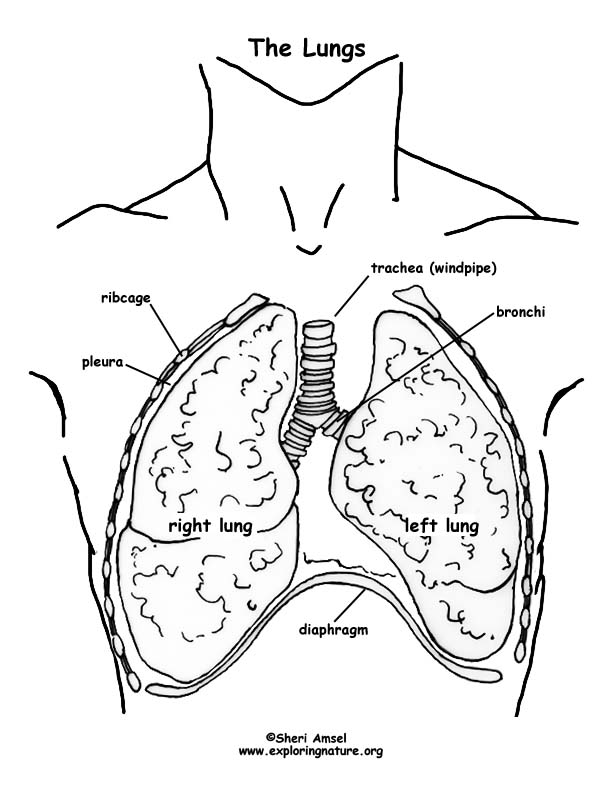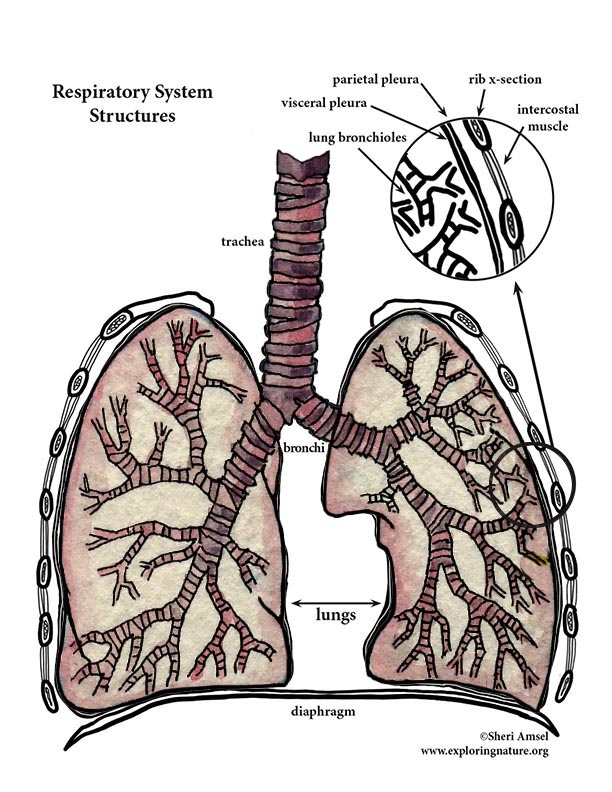

The two lungs fill the ribcage around the heart and big blood vessels that flow through it. The heart is tilted a bit to the left so the left lung is smaller than the right lung. The left lung has two lobes (sections). The right lung has three lobes (sections). The inferior side of each lung (the bottom) are bound to the muscular diaphragm.
Inside each lobe, there are smaller segments that each have their own blood supply bringing carbon dioxide in and oxygen out. The pulmonary arteries bring the carbon dioxide in and the pulmonary veins bring the oxygen out and back toward the heart. This is the only place in the whole body where veins carry oxygen-rich blood and arteries carry oxygen-poor blood.
The trachea brings oxygen in the lungs via the two bronchi which then spilt into smaller and smaller bronchioles. This bronchial tree, with all its branching ducts, divides down to the smallest alveoli – found throughout the lung segments.This is where the gas exchange occurs.
The lungs are covered by a two-layer membrane called the pleura. These two layers have a slippery fluid between them that allows them slide by each other when we inhale and exhale. The inside layer is the visceral pleura. The outside layer is the parietal pleura.
The lungs are very stretchy (elastic). When we inhale they expand. When we exhale they spring back to shape. With each inhale and exhale we have exchanged life giving oxygen for the carbon dioxide waste we need to be rid of.

